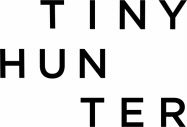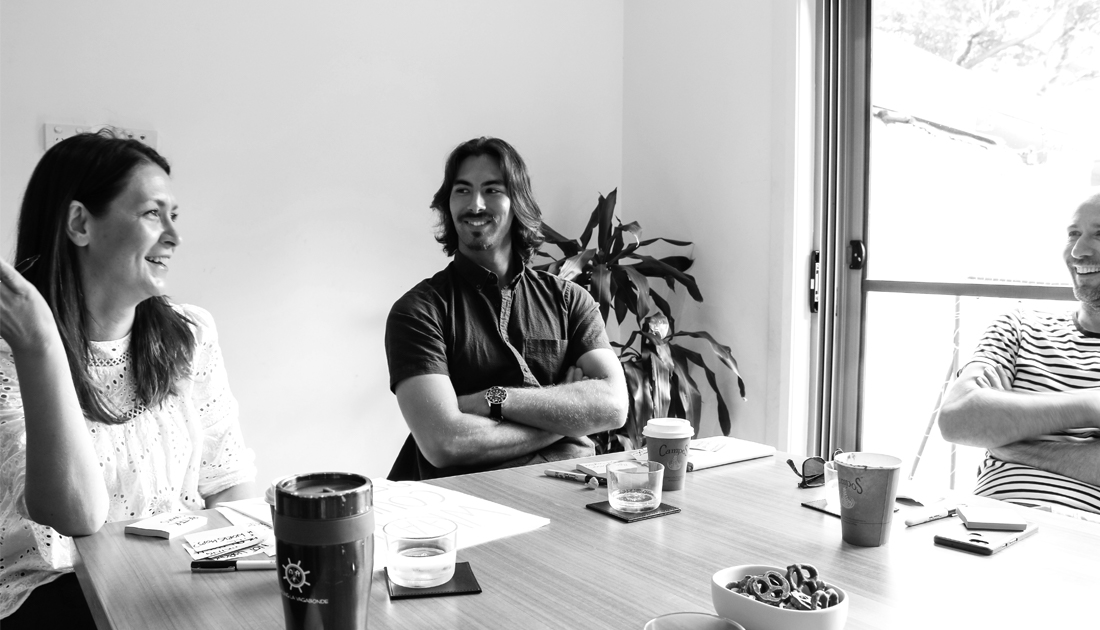How to maintain great work culture in a (remote) business
It’s pretty safe to say that 2020 and the whole COVID pandemic turned everything on its head… the way we live, socialise and work had to be totally reconsidered. And, we have to say that despite the challenge that comes with change, it wasn’t all bad for us over at Tiny Hunter. We had to move out of our brand new Alexandria space, equipped with meditation rooms and sparkling water on tap, so that wasn’t ideal — but what we found was pretty special.
We found a way to stay connected and integrated from afar, and that has in the long run allowed some of our employees to move interstate for a change of lifestyle, trade in the daily two hour commute for more time with the family and also it’s paved the way for our team to grow beyond our borders. With Tiny Hunters now based in New Zealand, across regional NSW and even the Philippines, we’re officially a fully remote agency with talent sourced from all over the world. As we know, huge shifts in the ‘normal’ does come with its own set of challenges and this was no exception. We wondered how we would firstly operate logistically as a creative agency when our team wasn’t able to share break-out room conversations or hard drives. We also worried about our ability to stay culturally connected without having a physical space to share all together. So, in what was a huge team effort to overcome these challenges, we’ve navigated the shift from physical to virtual fairly seamlessly. Here are some of the most helpful tools, practices and routines we’ve implemented to make sure we’ve remained logistically and socially connected – and can continue to deliver world class creative.
THE BUSINESS END
Pre-COVID, the thought of conducting workshops, having creative discussions or managing resources in general, without being in the same room would have sent most of us into a tailspin of disorganised panic. But us humans are an adaptable breed, probably much more so than we ever imagined. Though we did use some of these tools before going remote, the way we rely on them has certainly changed and the addition of some new and wonderful ones has been instrumental to our virtual success.
GOOGLE DRIVE
Yes, it’s a familiar one but probably one of the MOST important. Where many businesses have a shared hard-drive, we have Google. Though there are other options available to access shared drives remotely, Google Drive by far has proven to be the easiest solution for file sharing. In a stroke of luck, shortly before the pandemic hit we actually somehow pre-empted the importance of a file sharing option for the team and moved everything we had from our physical server, to Google.
It’s easy to navigate, easy to set up folders and manage sharing. We’re all so well acquainted with it now that it works fabulously – just make sure you have a predefined structure of where things should be saved before setting up your remote access. Just like you would with a server….
JIRA
If you’re not familiar with JIRA, basically it’s a briefing and task management tool. There are a few of them around, so if you don’t use this particular one then you’ve probably used something similar. Everyone on the team has their own ‘board’, with tasks listed out in categories of ‘to do’, ‘in progress’, ‘review’ or ‘done’ (and no, the ‘to do’ column is never empty, in case you were wondering).
The great thing about a tool like JIRA is it centralises all tasks into one place. You don’t have any confusion around where that person gave you the information for that thing you were supposed to do yesterday, or any discrepancy around what was involved in the task or when it was due. JIRA tasks all have an option to input a due date plus a really easy-to-use briefing and feedback model whereby you can comment and reassign the JIRA to whoever needs to review the work — and then eventually complete it. Thank you JIRA, we heart you.
SLACK
Next up is possibly one of our most important virtual working tools — Slack. Most office spaces used Slack even during times where we could literally walk across the room to ask someone a question. Why? Maybe to keep the office a quiet space. Anyway the point is, we thought it was GREAT back then but it’s IMPERATIVE now. For any quick chats or questions you need to discuss with a coworker, Slack is great. It has text version options or you can make a phone call through the platform too.
You can also send gifs which to be honest, really saved a lot of us during the peak of the lockdown when human interaction was a distant memory. The ability to send hilarious work-related gifs to one another throughout the day brought much needed smiles to many faces.
Slack also allows ‘channels’ to be created so you can have project or department specific areas, and within the group you can tag specific people when you really need their attention – a bit like yelling across the room. It’s also just got great usability. Very easy to navigate and you can even create your own personal avatar so people recognise you on screen.
MIRO
For all those times you wish you could be in a room together with a bunch of post-it notes and a whiteboard — Miro is the virtual alternative. Miro has allowed us to move our workshops online, and in many ways has improved the experience. No more ‘side-chats’ and a more neutral environment for less confident personalities. Creating Post-Its virtually gives everyone a voice and there are voting tools to get a sense of the group priorities. Moving to Miro now means we can run our workshops for international clients without having to travel which really opens up opportunities for the business.
VIDEO CONFERENCE
And of course, for the moments where all these tools just aren’t as good as an old fashion face-to-face, well we can do that virtually too. Google meet is our current go-to but we do use Zoom for longer meetings or interviews that need to be recorded. We have a weekly Monday kick-off session via Google meet where we share upcoming work, chat about what’s on the agenda and share stories from the week before about our teammates that bring to life our values. And this actually feeds into our final logistical tip for the remote office, which is ensuring work hours (though flexible) have at least one day cross over where the whole team is online. For us, it’s a Monday. We make sure that our Monday meetings work for global time zones and part-timers’ schedules too.
STAYING CULTURALLY CONNECTED
So this part of the remote office equation is a little trickier. A sense of culture and connectivity traditionally comes from… well being physically near the people you spend time with. That makes it somewhat easy in terms of organic connectedness. However we HAVE managed to figure out work arounds to this – with a little more pro-activity – and so far everyone seems to be happy!
DAILY HUDDLE AND OM-NOMI
What do you miss most about being in the office everyday (if you’re still working partly or fully from home)? For us, it was those little moments of unplanned social interaction. The chat you have with Mary from accounting in the communal kitchen while making a cup of tea. Or the quick joke you make in the lift with some colleagues on the way to your floor. It can’t be all business, simply because we’re human and we need some sense of socialising.
So to combat this, we have a ‘daily huddle’. It’s at the same time everyday and unlike many other businesses there is absolutely no agenda. We all jump onto Google Meet and just chat about life. Sounds awkward but it’s surprisingly not. We always find things to talk about and it provides a much needed social element in our otherwise WFH life. Then, for those of us who mostly miss Friday lunch beers. Or a post work bevy, we have On-nomi. On-nomi – or オン飲み in Japanese – means drinking online. It’s basically huddle except it takes place during an acceptable time to drink alcohol… and we talk and drink the alcohol, at home but together.
MONTHLY TEAM GET TOGETHER
All of this is great and it works really well. But we also DO like to actually see each other occasionally. You know to remind ourselves that we aren’t just faces behind a screen. So for that, we arrange a monthly team meet!
It’s often split between being business focused and team building. Sometimes it’s just one or the other but it’s always a refreshing break from WFH life and inspiring just to get together and be in the same room. Our international team members dial in for this wherever possible.
WFH TREATS
Courtesy of our incredible leaders, everyone in the Tiny Hunter team has at various different stages received a ‘WFH pack’. Including things we all need to stay focused at home… like chocolate. Ok it’s mainly chocolate. But we aren’t complaining. This is just a really nice little way for everyone to feel thought of and appreciated and that kind of sentiment does a lot to raise morale and builds a nurturing work culture.
So you don’t have to be physically together, to feel a sense of togetherness. COVID has taught us that adaptability is a strength we all possess and opened the door to a whole new way of life. One we continue to embrace at Tiny Hunter.
Will we go back to traditional office working eventually? Perhaps. There’s a lot to be said for the benefits of sharing a physical space as well, even if it’s on a rotation or looks a little different still to what used to be the ‘norm’. But for now, this is working really well for us. So for those of you still working mainly from home but feeling a little disconnected, give some of these ideas a go. Hopefully you’re as happy as a Hunter very soon!









